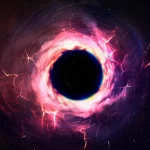Key Takeaways:
- Astronomers have observed shock waves rippling the cosmic web for the first time, shedding light on its intricate structure.
- By combining radio telescope images, scientists detected faint radio emissions revealing the presence of shock waves and magnetic fields within the cosmic filaments.
- The discovery offers insights into the elusive properties and origins of large-scale magnetic fields, providing clues about the cosmic web’s formation.
- Highly polarized radio emissions suggest the presence of aligned magnetic fields surrounding cosmic filaments, confirming theoretical predictions.
- Despite this breakthrough, the exact role of magnetic fields in shaping the cosmic web and their fundamental importance in the universe remain open questions for further exploration.
For the first time, astronomers have observed shock waves rippling along strands of the cosmic network — the vast tangle of galaxies, gas, and dark matter that fills the visible universe.
By combining hundreds of thousands of radio telescope images, scientists unveiled the subtle illumination produced as shock waves propel charged particles through the magnetic fields that traverse the cosmic web. Detecting these shock waves could provide astronomers with deeper insights into these expansive magnetic fields, the properties and origins of which remain largely enigmatic, as researchers report in the Science Advances.
At its broadest scale, our universe resembles a sort of Swiss cheese. Galaxies are not uniformly spread throughout space; instead, they aggregate into immense clusters linked by filamentous strands of sparse gas, galaxies, and dark matter, separated by not-quite-empty voids.
Under the influence of gravity, galaxy clusters merge, filaments collide, and gas from the voids descends onto filaments and clusters. In simulations of the cosmic web, this collective activity consistently triggers significant shock waves within and along filaments.
Filaments constitute the majority of the cosmic web but are considerably more challenging to detect than galaxies. Although scientists have previously observed shock waves surrounding galaxy clusters, shocks within filaments have remained elusive. However, as astronomer Reinout van Weeren of Leiden University in the Netherlands, who was not involved in the study, asserts, they should be ubiquitous throughout the cosmic web.
Shock waves along filaments would accelerate charged particles through the pervasive magnetic fields of the cosmic web. When this occurs, the particles emit radiation at wavelengths detectable by radio telescopes, albeit very faintly.

A solitary shock wave within a filament would appear indistinguishable from noise, according to radio astronomer Tessa Vernstrom of the International Centre for Radio Astronomy Research in Crawley, Australia.
Instead of searching for individual shock waves, Vernstrom and her team aggregated radio images of over 600,000 pairs of galaxy clusters connected by filaments to generate a composite image. This process amplified weak signals, revealing a faint radio emission emanating from the filaments between clusters.
The faint signal exhibits high polarization, indicating that the radio waves are predominantly aligned. While highly polarized light is uncommon in the cosmos, it is anticipated from radio emissions produced by shock waves, suggests van Weeren.
The discovery extends beyond validating the predictions of cosmic web simulations. The polarized radio emissions also afford a rare glimpse into the magnetic fields permeating the cosmic web, albeit indirectly.
These shock waves, Brüggen asserts, effectively demonstrate the existence of large-scale magnetic fields enveloping these filaments.
Nevertheless, the origins of cosmic magnetic fields remain an open question. Equally enigmatic is the role these fields play in shaping the cosmic web.
“Magnetism is one of the four fundamental forces of nature, but its significance on these grand scales remains elusive,” Vernstrom remarks.


